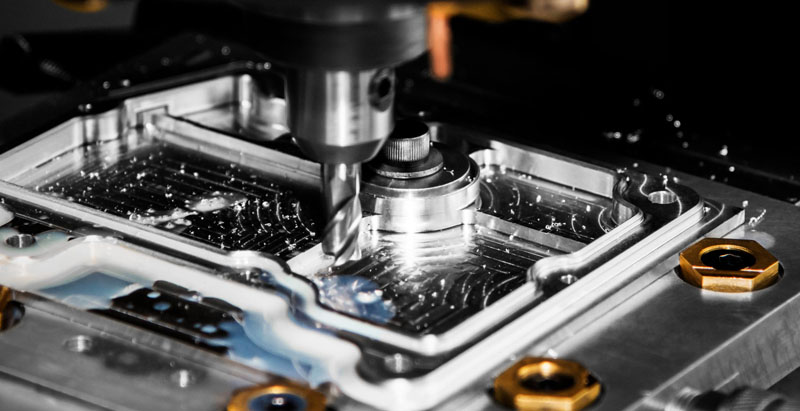Those who are proficient in machining basically know what mechanical seal is. In fact, we often call it face sealing. This sealing method is mainly used to change the axial seal that is easy to leak into the face seal that is difficult to leak. In fact, it is simply the shaft seal device of rotating machinery. Mechanical seal is a device to prevent fluid leakage through at least one pair of end faces perpendicular to the rotating shaft under the cooperation of liquid pressure, elastic force (or magnetic force) of compensation mechanism and auxiliary seal. It is widely used to seal the rotating shaft of pumps, kettles, compressors and other similar equipment.
The mechanical seal in the processing of precision parts is usually composed of moving ring, stationary ring, pressing element and sealing element. The moving ring and stationary ring are closely connected to form a sealing surface. The moving ring rotates with the pump shaft to prevent medium leakage. The ring depends on the pressure of the liquid in the seal chamber, so its end face is pressed against the end face of the stationary ring. The purpose of sealing is achieved by generating appropriate specific pressure at the end faces of the two rings and maintaining a thin liquid film.

Mechanical processing plays a role in sealing the gap between the moving ring and the shaft, and the gap between the stationary ring and the gland. At the same time, the elastic element plays a buffering role on the vibration and impact of the pump. The pressure generated by the pressing element can keep the end face of the pump in a non-operating state, ensure that the sealing medium does not leak, and prevent impurities from entering the sealing end face.
The normal operation of mechanical seal is closely related to its own performance and external conditions. In actual operation, the mechanical seal is combined with other parts of the pump, but we must first ensure our own precision parts processing performance, auxiliary sealing device and installation technical requirements, so that the mechanical seal can play its due role.
Faults such as vibration and mechanical seal heating in the processing of precision parts will make the end face of the dynamic and static rings rough during the equipment rotation, and the gap between the dynamic and static rings and the seal cavity is too small, resulting in vibration due to the collision of the vibration pendulum. Sometimes, due to the poor corrosion resistance and heat resistance of the seal end face, or insufficient cooling during installation or particle impurities on the end face, vibration and heat of the mechanical seal will also be caused. During the operation of rotating equipment, parts will fail, and the sealing end face often suffers from wear, thermal cracking, deformation, damage and other phenomena. After long-term use, the spring will be loose, broken and corroded, and the auxiliary seal ring may also be cracked, twisted, deformed and broken.


